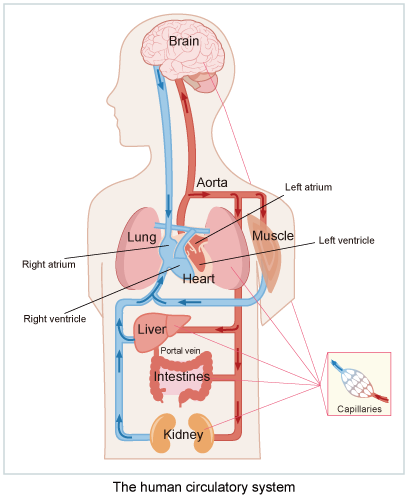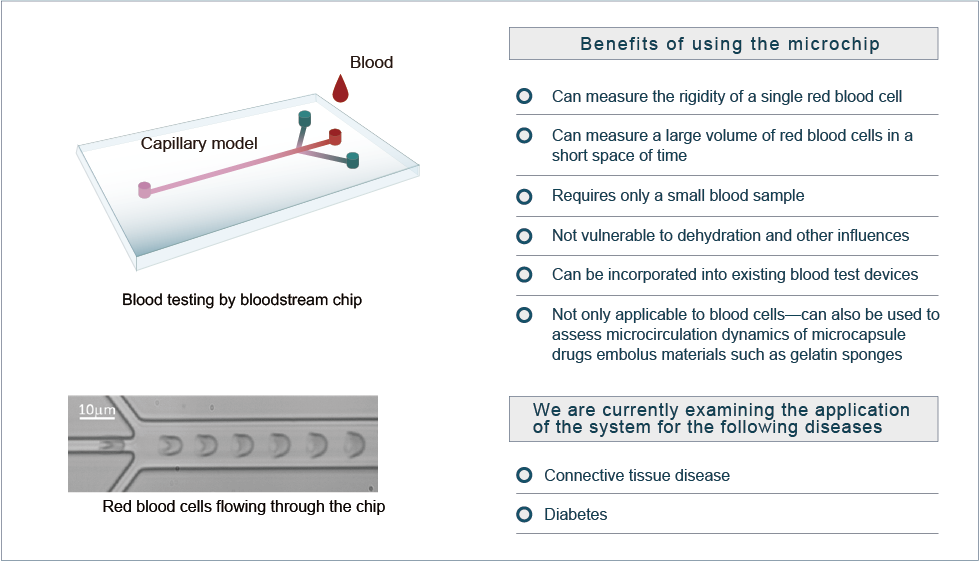
Cardiovascular disease (CVD) is one of the major causes of death in Japan, at par with malignant neoplasms.
CVD occurs in many cases because of lifestyle-related diseases, which can increase blood viscosity, harden blood vessels, or both.
Changes in the condition of blood vessels are relatively easy to spot, as they present with symptoms such as hypertension. However, since red blood cells, a key component in blood, are ordinarily replaced every four months, it is difficult to monitor the degeneration itself. For this reason, it is necessary to refer to biochemical test indices.
As specialists in hemodynamics, we have engaged in research for developing new medical devices. As a part of this effort, we have tried to recreate as far as possible, the hemodynamics that exists invivo and to assess the function of artificial heart valves. As an example of an application of this research, we have developed a method for directly monitoring degeneration-driven changes in the rigidity of red blood cells, which play a decisive role in circulatory condition.
The method involves pouring small blood sample into a microchip the size of a capillary. The chip directly monitors the rigidity of red blood cells, a feat not possible with traditional biochemical testing.
We are working on applications of this method, such as visualizing the efficacy of drug therapies and other treatments.

